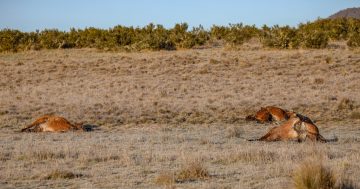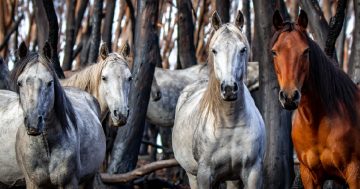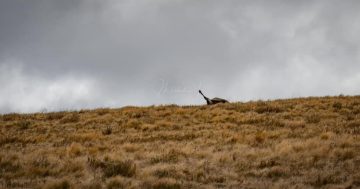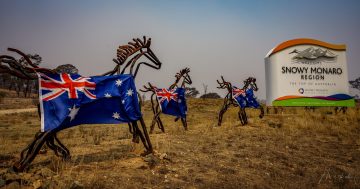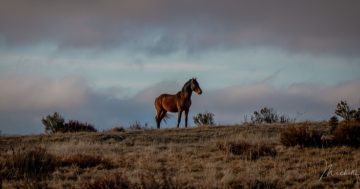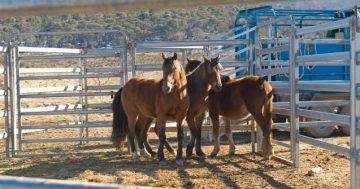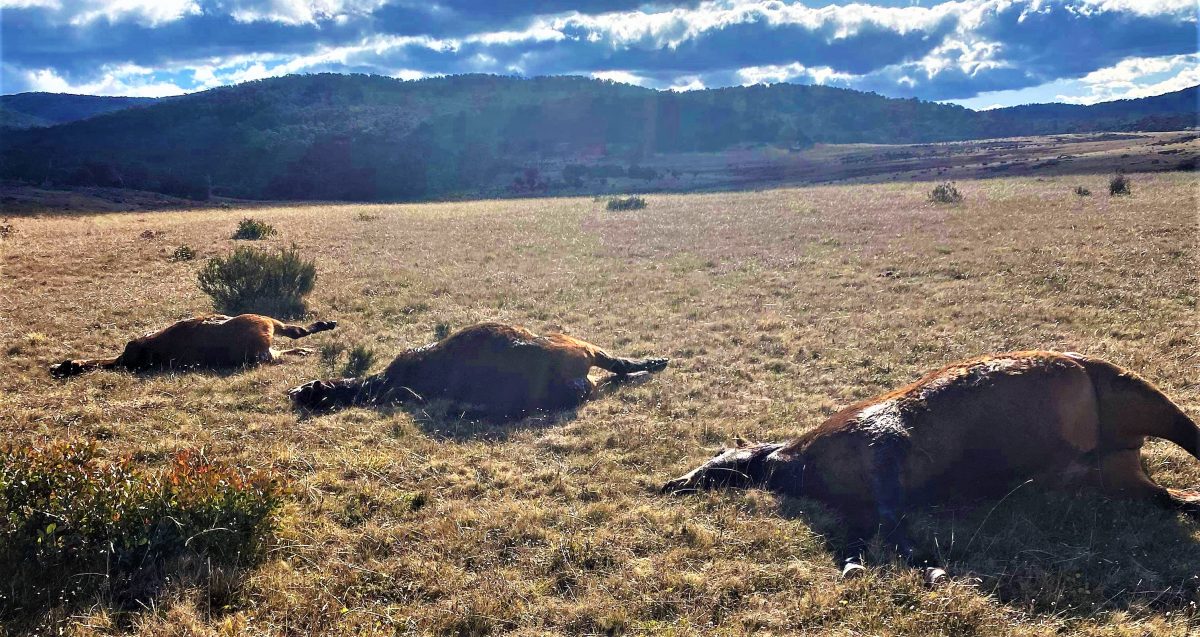
A landholder has written to the NSW Government outlining her frustration with park management practice after a recent cull left 67 brumby carcasses lying in Kosciuszko National Park. Photo: Supplied.
A frustrated neighbour of the Kosciuszko National Park (KNP), Lisa Rowbotham, has written a letter outlining her concerns about park management to NSW Premier Chris Minns, Environment Minister Penny Sharpe and Member for Monaro Steve Whan.
The letter specifically deals with the recent National Parks and Wildlife (NPWS) cull of 67 brumbies on land adjacent to hers, leaving the carcasses to rot and provide a food source for wild dogs and pigs.
Ms Rowbotham posted the letter on Facebook, stating she really didn’t expect a response from the government, considering the lack of response she had received from earlier communications with NPWS and other government agencies.
However, local Upper House member Bronnie Taylor MLC has offered to read the letter to parliament.
While not taking sides on the issue, Ms Taylor said she thought the letter was very well written, very balanced and believed parliament needed to hear it.
The letter reads: “As I sit here to write this letter, I sadly ponder the fact that it will likely fall on deaf ears, but we are now at a point of frustration that we are unsure what else we can do.
“Our family have been farming in the NSW Snowy Mountains High Country for over 100 years. I was fortunate to grow up horse riding, camping and fishing in the mountains where we also run cattle in the summer months on our 1200-acre property alongside the now Kosciuszko National Park. Almost every year of my life, we have saddled up our horses and drove our cattle up the mountains for the summer months. Over two days as soon as the bull flies ease off after Christmas we would set off along the road to deliver them to fresher pastures, and as winter sets in, we drove them home again.
“It’s a pocket of land that we treasure greatly and that is regarded as “heaven” by many locals and visitors alike. In the springtime it is covered with wildflowers and the creeks and rivers have the cleanest freshest water you’ll find anywhere in the world. The trees are healthy and the wildlife is abundant. Not a day goes by that we don’t appreciate how fortunate we are to be caretakers of such a beautiful part of Australia.
“Which is why we were in such horror with the recent culling spree by our neighbour (Kosciuszko National Park) in May 2023, where 67 brumbies adjoining our property were shot under what we assume was the cover of darkness in a public area with no notification to either neighbours or the public and left laying to rot alongside our pristine waterways, walking tracks and even at a very popular well used campground for everyone to see.
“We appreciate that the brumby debate in the Snowy Mountains is a hot topic and whilst we agree that horse numbers need to be managed (our subalpine zone has a retention policy under the Wild Horse Management Program), we don’t agree with the methods used on this occasion and we are even more appalled by the ignorant decision of NPWS to leave the 67 carcasses laying to rot when they should have been removed, cremated or buried as any other landowner in Australia would be required to do by law. Now you may say (as Atticus Fleming did last week) that it’s natural to let them decompose and return to the earth, and if it was a few carcasses in the bush then we would likely agree. But we are referring to 67 carcasses (approx. 33 tonne, so equivalent to over 600 kangaroos) left laying across a reasonably small public area for bushwalkers and campers to navigate around. The sight is something you honestly can’t fathom until you see it for yourself and the smell of the rotting carcasses is putrid. It’s a repulsive situation to even those of us that are unfortunately familiar to dealing with deceased animals, I can’t imagine how visitors to our National Park feel when they come to visit or how young children react when they walk upon them.
“And now, there is the flow-on consequences for us and other neighbouring landholders. Feral animals travelling to feast on these carcasses. We are certainly no strangers to wild dogs and for many years have worked with National Parks to control numbers, however the food source that is now laying in the park is of epic proportions and as we are in a cool climate will also take much longer to decompose meaning an explosion of dog, fox and pig numbers which will pose a large threat to our livelihood and potentially also to the public.
“And whilst Mr Fleming says the baiting program has been heavily increased, there isn’t a local landholder around that believes the KNP will do enough baiting to avoid this disaster unfolding.
“Unfortunately, the above issue is only one of the many serious concerns we have surrounding the management of KNP. The once pristine High Country stretch bordering us at Snowy Plain is fast scrubbing up and becoming more inaccessible year after year and the risk of another intense bushfire potentially wiping us out yet again raises serious concerns. In the prior 2003 and 2020 fires, we and most other local landholders dedicated weeks of our lives to fighting two of the largest and most severe bushfires our region has ever seen and interestingly, both times the fire has been too intense for RFS to approach until it entered private land such as ours, due to the intense fuel loads inside the KNP. These major fires as you are no doubt aware, have heavily impacted on both flora and fauna in the KNP due to their intensity and unfortunately for some species it would seem they aren’t regenerating.
“As an Australian, to watch the deterioration of our public managed land is devastating and as a 5th generation landowner it’s beyond frustrating. It’s our responsibility for the short time we are on this Earth to take care of where we live and as a farmer, it’s in our best interest to do so and ensure the land is thriving for the next generation to continue the tradition. The NSW Government needs to realise that we aren’t the enemy and to understand that the local landholders and neighbours have passion and experience on our side. We all want the same result, a healthy environment for everyone to enjoy both now and years after we are gone.
“We and many other adjoining landowners to NSW National Parks share major concerns over the current management of our public land (and in this case the KNP in particular). Every year feels like another nail in the coffin to our way of life up here to be honest. A kick in the face from a seemingly untouchable government agency that are a law unto themselves.
“So what are we asking for? Firstly, for the carcasses to be dealt with appropriately, as should have been done in the first place. Secondly, communication and consideration. It’s a simple one really. As neighbours, we feel that some form of communication and consideration would be appropriate. That when we lodge submissions we should receive a response (not just a generic reply). When we have concerns that they are heard and when we have issues, that they are addressed. Local rangers/staff aren’t to blame here either. Their hands are often tied and they are doing what they can within the rules made by those in the city.
“Last but certainly not least, an enquiry into National Parks and Wildlife Services’ land management practices and their policies.
“This is an issue that needs addressing from above and soon, before there is nothing but ashes left.
Lisa Rowbotham”.






